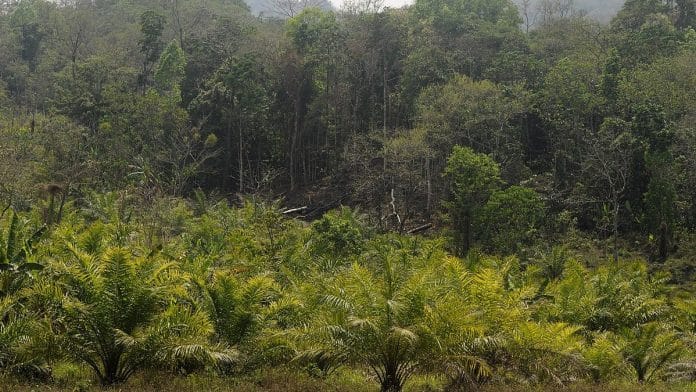India is counted as a major agri-exporting country and has made significant progress in achieving self-sufficiency in the production of rice, wheat, and sugar. However, its dependence on edible oil imports remains high. These imports were worth Rs 1.57 lakh crore in October 2022, underscoring the need for domestic cultivation of palm oil to achieve the vision of an ‘Atmanirbhar Bharat’. The move toward self-reliance also holds a massive potential for empowering Indian farmers.
India is the largest importer of palm oil globally, with consumption going up by 24 per cent in 2022-23. Indians consume 240 lakh tonnes of edible oil annually, with 130-150 lakh tonnes being imported, and palm oil accounting for 56-59 per cent of this import.
Malaysian Minister of Plantation and Commodities Johari Abdul Ghani’s recent visit here is significant as India has reportedly been the largest buyer of Malaysian palm oil for over 14 years. As India progresses toward its goal of achieving self-reliance in edible oils and becoming a global powerhouse, a collaboration between the two countries can be mutually beneficial. Palm oil, after all, is Malaysia’s largest agribusiness sector.
India can learn from the Malaysian Sustainable Palm Oil (MSPO) certification scheme, and implement better operational practices within oil palm management while safeguarding forests, biodiversity, and local communities.
Reducing dependence
The Indian government’s National Mission on Edible Oils-Oil Palm (NMEO-OP) initiative is a move to reduce dependence on imports, address food security, combat rising unemployment, and promote Atmanirbharta (self-reliance). Currently, India has more than 3 lakh hectares of land under oil palm, with an additional potential of around 28 lakh hectares. This holds massive potential to reduce India’s palm oil import burden of about Rs 82,000 crore.
In an uncertain geopolitical environment, with current trends favouring de-globalisation, an over-dependence on imports may compromise national interest in the long run. Palm oil is accepted widely as an edible oil, biofuel, and bio-lubricant, besides being used widely in cosmetics and pharmaceuticals. Due to its unique nutritional benefits and affordability, it also enjoys acceptance as a cooking medium in certain parts of India.
Palm oil happens to be a land-sparing crop and yields four to ten times more oil per hectare than traditional oilseeds such as mustard, groundnut, rapeseed, rice bran, soy, or sunflower. In fact, according to Our World in Data, the statistical unit based at the University of Oxford, palm oil produces 36 per cent of the world’s oil but uses less than 9 per cent of croplands devoted to oil production.
The NMEO-OP, announced in August 2021 by Prime Minister Narendra Modi, involves an investment of over Rs 11,000 crore. The mission aims to triple domestic production to 11 lakh tonnes by 2025-26 and 28 lakh tonnes by 2029-30, with oil palm cultivation expanding to 10 lakh hectares of land by 2025-26 and 16.7 lakh hectares by 2029-30.
Also read: Modi govt’s Plan A, Plan B are not working. There are 3 areas of worry
Assistance to farmers
The economic lifespan of the perennial oil palm plants is about 30 years, including juvenile and stabilising periods. The mission seeks to increase the seed replacement ratio (SRR) with a focus on varietal replacement. It will also encourage other measures such as diversification from low-yielding cereals crops to oilseeds crops; inter-cropping of oilseeds with cereals, pulses, and sugarcane; use of fallow land after paddy or potato cultivation, and expansion of cultivation of oil palm and tree borne oilseeds (TBOs) in watersheds and wastelands. Intercropping during the gestation period of oil palm and TBOs can provide farmers with economic returns during periods of no production.
Financial assistance under NMEO-OP includes 85 per cent of the planting material cost and substantial support for plantation maintenance. This is shared in a 60:40 ratio between the Centre and the states, with a 90:10 ratio for North Eastern states.
The end-to-end support includes an assured buyback from the private players involved. It protects farmers from global price volatility in oil palm by providing viability gap payment (VGP). The government also permits 100 per cent foreign direct investment (FDI) in plantations and pledges massive financial aid to farmers.
India’s need for palm oil cultivation is undeniable, and the NMEO-OP is a critical step toward reducing import dependence and benefiting farmers through increased income and employment opportunities. Sustainable palm oil cultivation is not only viable but essential for India’s economic, environmental, and “Atmanirbhar” future.
CK Mishra is a former secretary to the Government of India. Views are personal.
(Edited by Prasanna Bachchhav)






